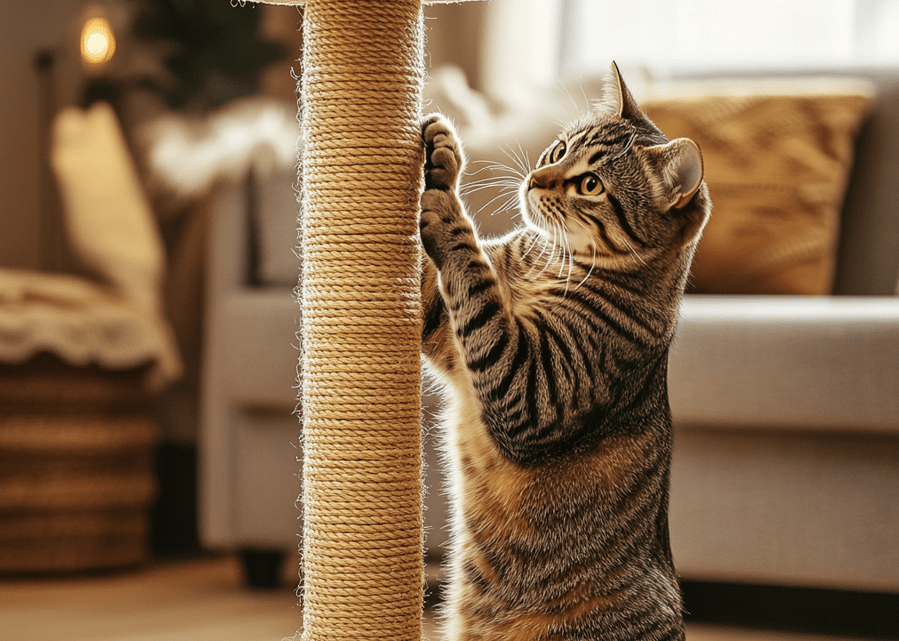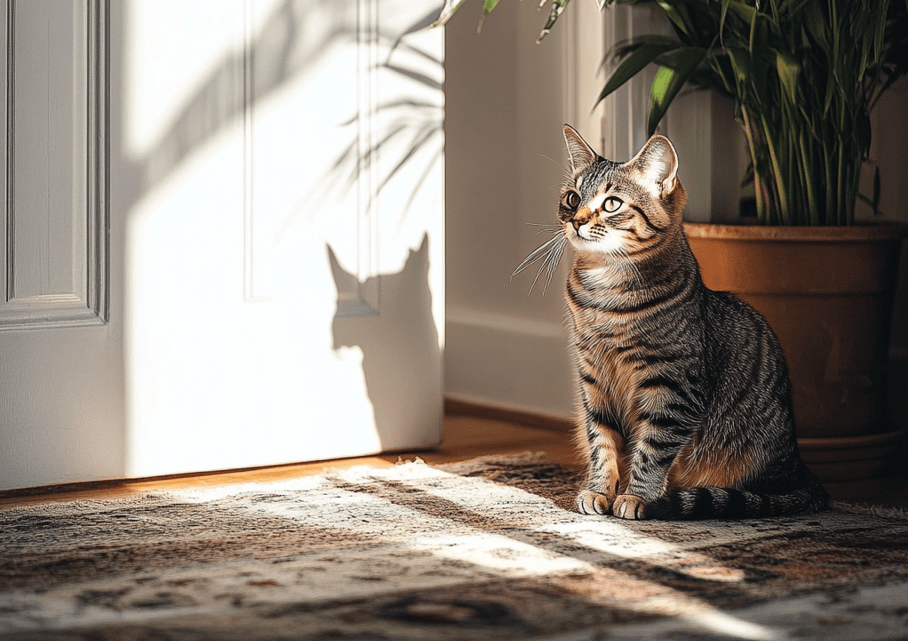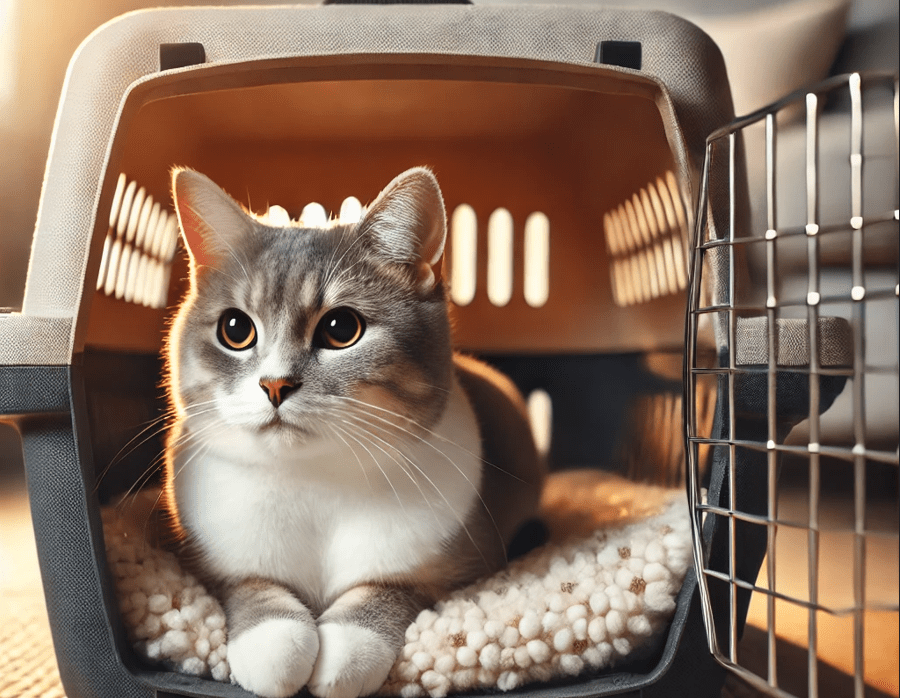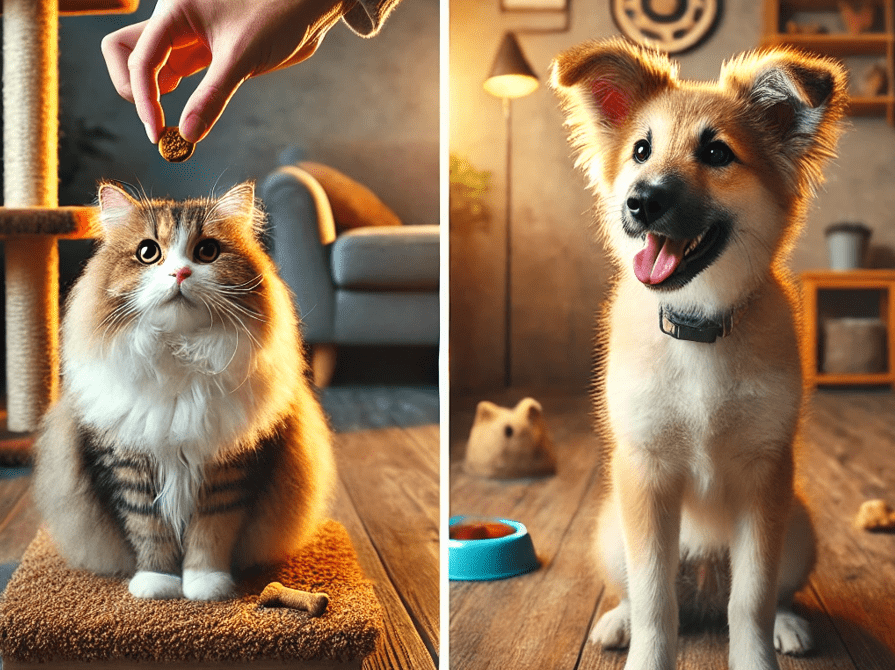
If you’ve ever attempted to groom your cat, you will appreciate how nerve-racking it can be, for both of you. Whether your cat runs for the hills at the sight of a brush or attacks you if you try to groom him, the struggle is real. As we can see, training cats to accept grooming is not only healthy for them but also builds a bond of positive feeling for the grooming routine to be done. Training cats to accept grooming is key to keeping them healthy, stress-free, and comfortable with regular care.With a calm, patient approach and the right techniques, you can train your cat to tolerate, and possibly even enjoy, the grooming process. Use this article to help make grooming an enjoyable time, both for you and your kitty.
Why Regular Grooming Matters for Your Cat’s Health?
Grooming is not only about making your cat look good but also about keeping them healthy. Grooming regularly helps remove excess hair, preventing mats and tangles that could be painful for your kitty. It also helps minimize shedding throughout the house and reduces the chances of hairballs. Grooming allows for the ideal exploration of skin conditions and fleas and ticks. Cats with long hair need grooming to avoid matting, hair that tangles and locks together, which can cause skin infections if it is not diverted.

In addition to the many practical benefits, grooming builds your relationship with your cat. If your cat connects grooming with a pleasurable experience, it can become a soothing, enjoyable ritual for you both. When you train your cats to accept grooming, you keep the grooming process productive and pleasant.
How to Select Your Grooming Products?
Choosing the proper tools is the first step towards training cats to accept grooming. Not every grooming tool is made equal, and the incorrect one can render the experience uncomfortable for both yourself and your feline companion. Begin with tools appropriate for your cat’s coat type and comfort level.
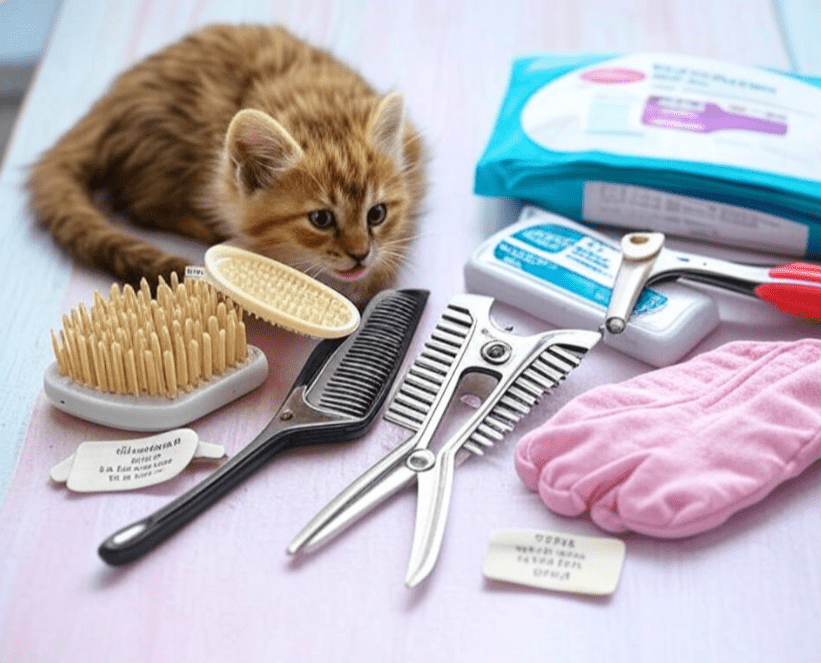
Of all grooming essentials, brushes occupy a critical place in the hierarchy. Long-haired cats need a wide-toothed comb or a slicker brush to avoid tangles. A soft bristle brush or grooming glove is needed for short-haired cats.
Nail clippers figure in here, as well. Regular nail trimming is very important, but using the wrong clipper can make it difficult and stressful for your cat. Look for clippers designed specifically for cats, which will be more comfortable to use.
Additional grooming items are ear cleaners and cat wipes. Some cats need their ears cleaned out on a regular basis; a cat-friendly ear cleaner and cotton balls or pads will be your best friend for this. If your kitty hates water, cat wipes can be a great way to do a quick clean-up in between grooming sessions.
The right grooming tools can make a world of difference when it comes to your kitty’s grooming comfort. Begin with tools that are gentle and will not upset your cat at all, and slowly apply new tools to the mix as they adjust to the process.
Introduce Grooming Slowly
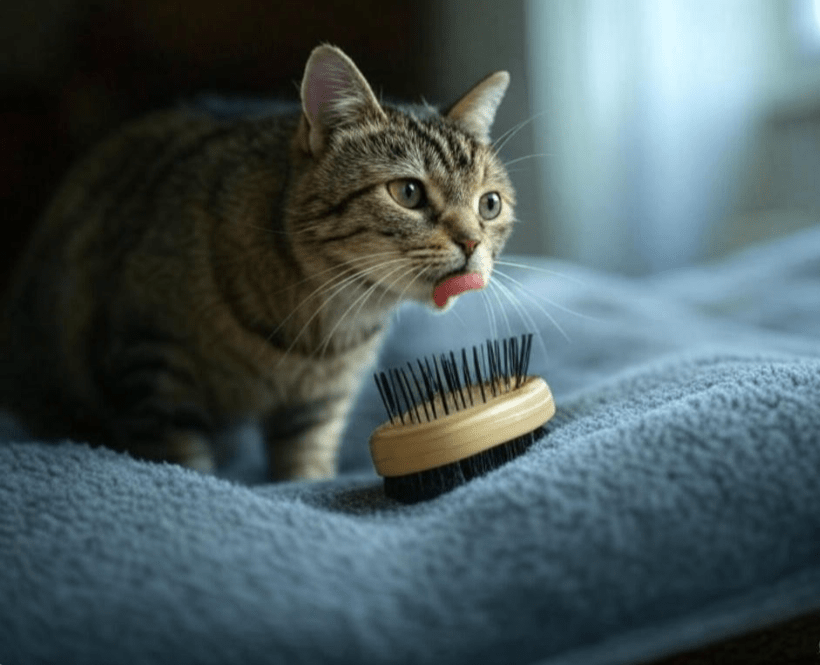
Bringing grooming to new kitties doesn’t have to be a big overnight deal. Starting slow is actually essential to teaching cats to tolerate grooming. Start only by getting your cat used to the grooming tools. Or just show them the brush, comb, or clippers without actually brushing them. Allow your cat to smell the tools and become familiar with the smell. You can even leave them near your cat’s favorite resting spot in order for the cat to get more familiar with them.
Once your cat is okay with the tools, you can proceed to short, gentle grooming sessions. Begin by doing a few seconds of brushing only. If the grooming doesn’t seem to bother your cat, you can gradually increase the time spent brushing him. The secret is to keep the sessions brief and slowly increase your cat’s tolerance.
The First Step to Successful Grooming: Positive Reinforcement
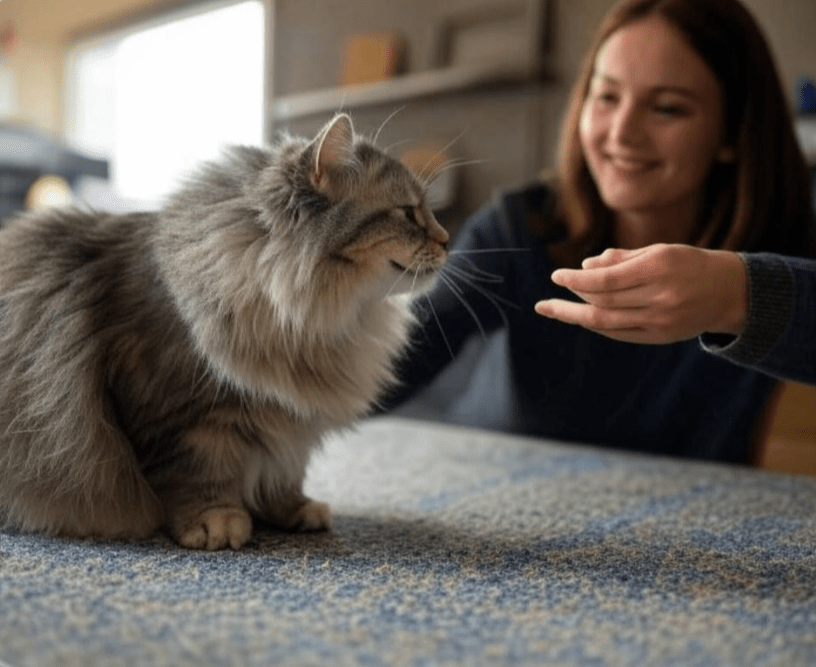
One of the most useful techniques for training cats to accept grooming is positive reinforcement. Good treatment and positive experience can work wonders with animals, and cats are no exception. With each brief grooming session, reward your cat with a treat, praise, or affection. This helps them link grooming with a good experience, so they will probably accept it the next time.
This is a great time to do some verbal praise too while going through the grooming process. Use a calm, soothing tone so your cat can feel more at ease. Do not raise your voice at your cat or let them escape from the grooming if they resist, this will instill negative associations with grooming.
For particularly nervous cats, take breaks during the grooming session. You can treat them after each successful break or when the whole session is done. The objective is to keep the experience as positive and rewarding as possible and to indulge your cat to feel safe and in comfort.
Steps Toward Accepting a New Grooming Alternative
So, it is important to take your time when introducing cats to grooming. You will have some cats who are naturally more relaxed and open to grooming, and some others that are going to take more time and patience. Here’s a gradual strategy for helping your cat get accustomed to grooming:
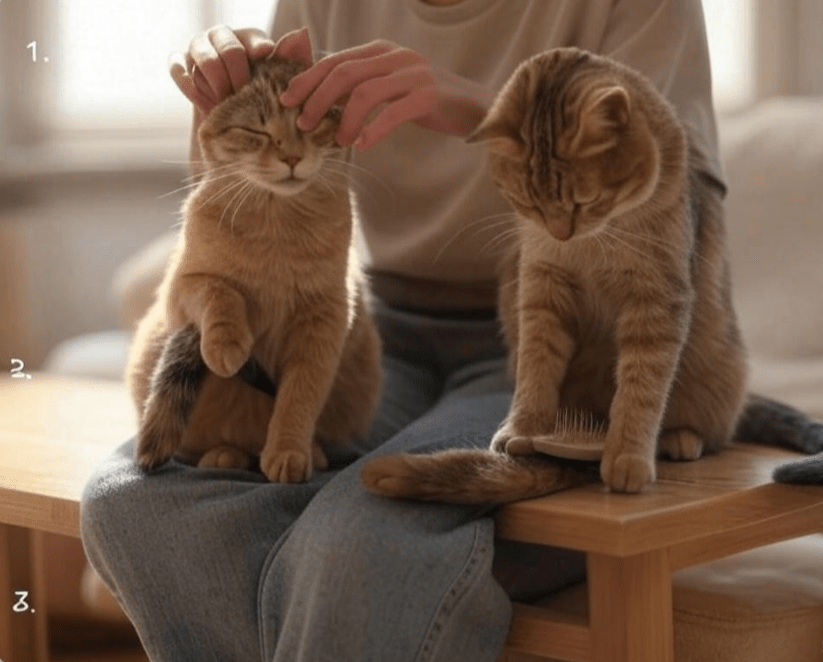
Step 1: Gently Touch and Handle Your Cat: Start off slow and gently touch and handle your cat. Begin with their paws, ears, and the face, which can be sensitive spots. This initial step should also be rewarded by the use of positive reinforcement, which could come in the form of treats and/or praise for remaining calm.
Step 2: Introduce the Grooming Tool: After your cat gets used to being handled, you can slowly bring out the grooming tool. Use a brush or comb and gently run it along your cat’s fur for a few seconds. If your cat stays relaxed, increase the duration gradually.
Step 3: Gradually Increase Sessions: Give your cat some time to adjust to the tools, and then gradually increase the frequency and duration of grooming sessions. Aim to be consistent; be patient with the steps you take toward your goals.
Step 4: Work Your Way to Sensitive Areas: As your cat becomes comfortable with the basic grooming process, start working towards more sensitive areas: the underbelly, tail, and paws. Be gentle and give plenty of treats.
The aim, of course, is to have positive associations with grooming so your feline feels comfortable and relaxed. This slow and steady approach will help your cat learn to accept grooming gradually.
How to Manage Resistance and Fear
Grooming can also be unwanted or resisted by some cats, particularly those with previous bad experiences. Do not push the grooming; this will just make the cat become more fearful and anxious. If your cat gets excited or scared, give them a break and time to cool off.
Don’t forget to take breaks in between to avoid unnecessary stress. If your cat gets stressed, stop grooming and let them take a breather. Allow yourself to go to your safe space and regroup before you take another approach.
If your cat still won’t groom, then try changing up the grooming tools. Others might need grooming gloves or softer brushes. Play with different tools until you discover one your cat enjoys. So, keep in mind that patience is of utmost importance. Every cat is individual, so be patient, as some may take longer to accept grooming than others. For especially stubborn cats, check with a vet or professional groomer for advice on getting the task done.
Keeping up with the regular grooming climbing sessions
When your cat begins to tolerate grooming, it’s a process that you should work into your routine. Regular grooming assists in maintaining a healthy coat, minimizing shedding, and preventing mats. It also enables you to look for signs of fleas, ticks, or skin problems.
Set a specific time each week for grooming sessions to develop a consistent grooming routine. Make it a scheduled event your cat can rely upon, something they look forward to. Also, keep grooming short and sweet! Shoot for a few minutes at a stretch, particularly at first. You can always adjust the session as your cat adjusts.
Staying attuned to your cat’s grooming needs is also critical to adjusting the frequency of grooming. Some cats require more grooming than others. For example, long-haired pets will need extra grooming to prevent matts and knots, while short-haired cats may need less frequent grooming sessions.
Keeping up with grooming sessions will not only help your cat feel healthy and comfortable but will also make grooming a low-stress activity for you both.
Conclusion

One of the most important health routines for your cats. Grooming doesn’t have to be a war, and with the right tools and techniques, it can be a pleasant experience for both you and your dog. Take small baby steps with it, using positive reinforcement to reward calm behavior in your cat. You will find that your cat will become more settled with grooming over time, and it will ensure a habit that both you and your feline friend will come to love. Just be patient and flexible, each cat is different, and the aim is to make grooming a pleasant experience for your furry companion.

